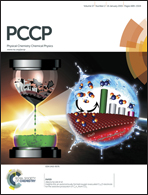Do encapsulated heat storage materials really retain their original thermal properties?
Abstract
The encapsulation of Rubitherm®27 (RT27), which is one of the most common commercially supplied heat storage materials, by polystyrene (PS), polydivinyl benzene (PDVB) and polymethyl methacrylate (PMMA) was carried out using conventional radical microsuspension polymerization. The products were purified to remove free RT27 and free polymer particles without RT27. In the cases of PS and PDVB microcapsules, the latent heats of melting and crystallization for RT27 ( and
and  , J/g-RT27) were clearly decreased by the encapsulation. On the other hand, those of the PMMA microcapsules were the same as pure RT27. A supercooling phenomenon was observed not only for PS and PDVB but also for the PMMA microcapsules. These results indicate that the thermal properties of the heat storage materials encapsulated depend on the type of polymer shells, i.e., encapsulation by polymer shell changes the thermal properties of RT27. This is quite different from the idea of other groups in the world, in which they discussed the thermal properties based on the ΔHm and ΔHc values expressed in J/g-capsule, assuming that the thermal properties of the heat storage materials are not changed by the encapsulation. Hereafter, this report should raise an alarm concerning the “wrong” common knowledge behind developing the encapsulation technology of heat storage materials.
, J/g-RT27) were clearly decreased by the encapsulation. On the other hand, those of the PMMA microcapsules were the same as pure RT27. A supercooling phenomenon was observed not only for PS and PDVB but also for the PMMA microcapsules. These results indicate that the thermal properties of the heat storage materials encapsulated depend on the type of polymer shells, i.e., encapsulation by polymer shell changes the thermal properties of RT27. This is quite different from the idea of other groups in the world, in which they discussed the thermal properties based on the ΔHm and ΔHc values expressed in J/g-capsule, assuming that the thermal properties of the heat storage materials are not changed by the encapsulation. Hereafter, this report should raise an alarm concerning the “wrong” common knowledge behind developing the encapsulation technology of heat storage materials.


 Please wait while we load your content...
Please wait while we load your content...